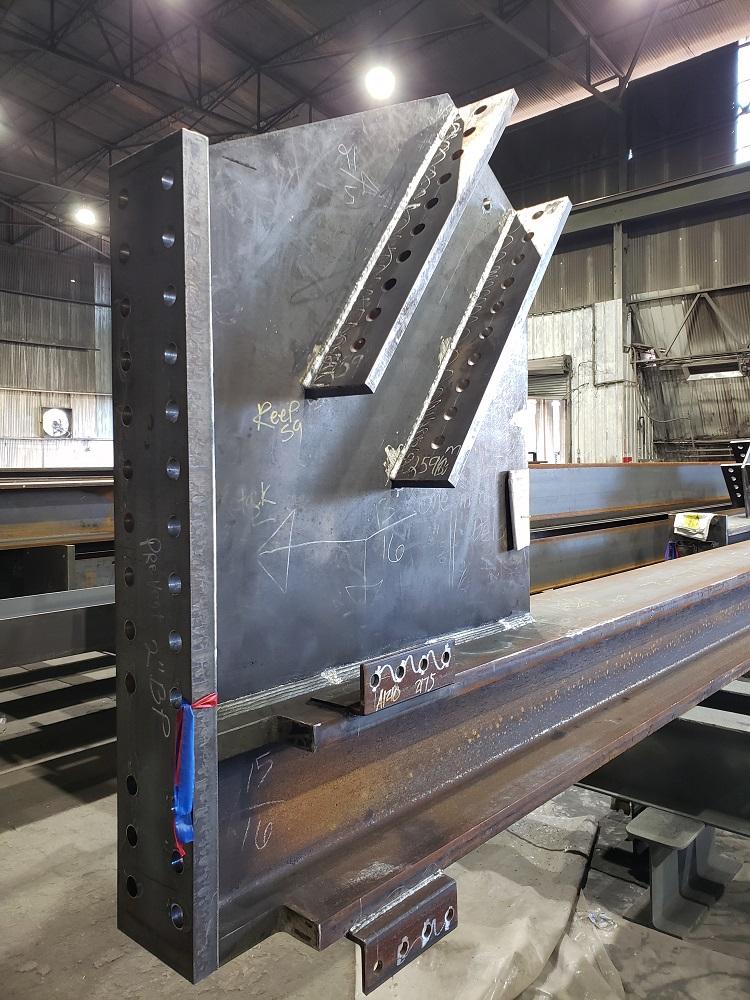Dependable Steel Fixing Services: Guaranteeing Structural Integrity
Wiki Article
Innovative Patterns in Steel Fabrication: Enhancing Sturdiness and Accuracy
In the realm of steel fabrication, the quest of longevity and precision has brought about a wave of cutting-edge fads that are reshaping the market. From innovations in welding technologies to the integration of robotic automation in manufacture processes, the landscape of steel manufacturing is evolving quickly. High-strength alloy advancement, combined with the utilization of 3D modeling and simulation software, is pressing the boundaries of what is possible in terms of architectural integrity and precision. Moreover, the expanding emphasis on sustainable methods in steel production is not only driving efficiency however additionally promoting a much more environmentally conscious strategy to manufacture. These patterns are not simply forming the existing however additionally preparing for the future of steel construction, assuring further improvements in sturdiness and accuracy.Advanced Welding Technologies
In the realm of steel fabrication, the fostering of advanced welding technologies has significantly transformed the industry's method to accomplishing premium quality and precision in structural welds. Advanced welding modern technologies, such as laser beam welding and rubbing stir welding, have arised as game-changers in the field. By leveraging these advanced welding methods, steel makers can raise the sturdiness, toughness, and accuracy of their structural welds, meeting the increasingly requiring requirements of modern building tasks.Robot Automation in Fabrication
Welcoming robotic automation has come to be a foundation of modern steel construction techniques, enhancing and improving procedures effectiveness across the market. Robots are reinventing the way steel elements are produced, supplying unrivaled accuracy and rate while lowering human error. These automated systems can take care of repeated jobs with regular accuracy, leading to higher quality output.One secret advantage of robotic automation in steel manufacture is the ability to function all the time without fatigue, dramatically increasing manufacturing output. This continual procedure minimizes downtime and increases job timelines, ultimately saving prices for suppliers. Furthermore, robotics can be configured to execute detailed jobs that might be hazardous or challenging for human employees, boosting safety and security in the office.
In addition, robotic automation makes it possible for seamless assimilation with other digital technologies, such as computer-aided style (CAD) software application and Internet of Points (IoT) systems (steel fabrication melbourne). This interconnected method enhances interaction in between different phases of fabrication, optimizing operations and ensuring real-time surveillance and control. As the steel fabrication sector proceeds to progress, robot automation sticks out as a transformative force driving effectiveness and precision in making procedures

High-Strength Alloy Growth
The advancement of high-strength alloy advancement in steel manufacture is reshaping the market's technique to improving product sturdiness and efficiency. High-strength alloys are crafted to show superior mechanical properties, such as enhanced tensile toughness, strength, and deterioration resistance compared to typical steel grades. By incorporating these advanced alloys into manufacture processes, suppliers can create parts that endure higher stress levels and harsh atmospheres, bring about even more reliable and durable output.One key benefit of high-strength alloy advancement is the capability to reduce material density without endangering architectural integrity. This not just leads to lighter-weight parts but also contributes to cost financial savings and enhanced performance in fabrication and assembly processes. The improved strength-to-weight ratio of these alloys permits for the design and building of frameworks with higher load-bearing capabilities while reducing general weight.
3D Modeling and Simulation Software Program
Developments in steel manufacture processes have been significantly moved by the combination of cutting-edge 3D modeling and simulation software devices. These devices allow makers to develop thorough digital designs of their tasks, enabling them to visualize the last item with precision prior to any kind of manual labor begins. By replicating various anxiety aspects, environmental problems, and structural tons, producers can optimize styles for boosted toughness and performance. In addition, 3D modeling and simulation software enhance the manufacturing procedure by determining potential concerns at an early stage, minimizing the demand for costly rework and minimizing material waste.
Sustainable Practices in Steel Manufacturing
Incorporating sustainable techniques right into steel production procedures is essential for decreasing ecological influence and guaranteeing long-lasting resource availability. One essential sustainable method is the adoption of energy-efficient modern technologies to decrease greenhouse gas emissions throughout the steel production process. This includes utilizing renewable energy sources, such as solar or wind power, to power steel plants and executing energy-efficient equipment to optimize energy usage.Another critical element of sustainable steel production is the responsible sourcing of raw materials. This includes making sure that the iron ore and other sources made use of in steelmaking are gotten from honest and ecologically friendly resources. By advertising transparency in the supply chain and adhering to stringent ecological requirements, steel manufacturers can decrease the adverse impacts of source removal on neighborhood environments and communities.

Verdict
Finally, the innovative fads in steel construction such as advanced welding modern technologies, robot automation, high-strength alloy development, 3D modeling and simulation software, and lasting practices are boosting the toughness and accuracy of steel products. These improvements are revolutionizing the steel construction industry by enhancing performance, quality, and sustainability. It is clear that the future of steel fabrication hinges on welcoming these advanced technologies to satisfy the needs of modern-day construction and production markets.In the world of steel manufacture, the pursuit of sturdiness and accuracy has actually led to a wave of innovative patterns that are improving the industry.In the realm of steel construction, the fostering of advanced welding innovations has actually significantly transformed the sector's method to attaining superior high quality and accuracy in architectural welds. As the steel manufacture market proceeds to advance, robot automation stands out as a transformative force driving efficiency and precision in producing procedures.
In addition, recycling and reusing steel scrap and waste materials play a considerable function in improving the sustainability of steel manufacturing. steel fixing.In verdict, the cutting-edge fads in steel construction such as sophisticated welding modern technologies, robot automation, high-strength alloy development, 3D modeling and simulation software, and sustainable practices are enhancing the sturdiness and precision of steel products
Report this wiki page